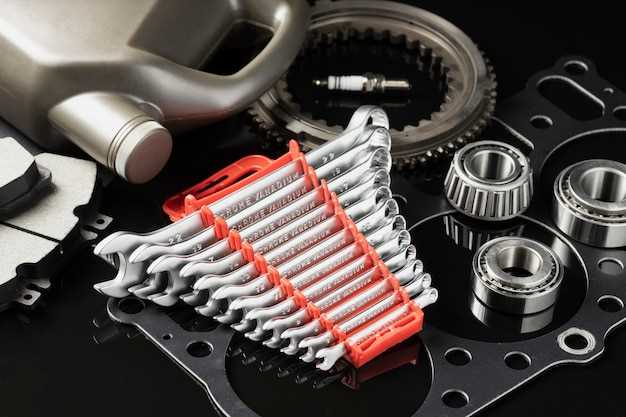

In the fast-paced world of competitive racing, the right suspension setup can make all the difference between success and failure. A meticulously tuned suspension not only enhances the vehicle’s handling but also optimizes performance on the racetrack, allowing drivers to push their machines to the limit. Understanding the nuances of suspension tuning is essential for any racer looking to maintain a competitive edge.
The suspension system plays a crucial role in how a car responds to both driver inputs and track conditions. By adjusting various parameters such as spring rates, damping characteristics, and ride height, racers can tailor their setups to suit specific racing styles and track layouts. This article delves into effective suspension tuning strategies that can help drivers unlock their vehicle’s full potential, enabling them to achieve faster lap times and enhanced stability.
As we explore the intricacies of suspension tuning, we will cover key aspects such as the balance between comfort and performance, the importance of alignment settings, and the impact of tire selection on overall setup. Each of these elements contributes to the racing car’s ability to navigate corners, absorb bumps, and maintain grip under high-speed conditions. Whether you’re a seasoned competitor or a newcomer to the racing scene, mastering these suspension tuning strategies will be pivotal in your journey toward victory.
Selecting the Right Suspension Components for Optimal Cornering Performance
Achieving optimal cornering performance in competitive racing is contingent upon selecting the right suspension components. The key elements of suspension systems, including springs, dampers, and anti-roll bars, play critical roles in how a vehicle handles during high-speed cornering.
Firstly, springs are fundamental in determining the ride height and weight transfer characteristics of the vehicle. Selecting the correct spring rate is essential; stiffer springs can reduce body roll during cornering, thereby enhancing stability. However, overly stiff springs may compromise grip on bumpy surfaces. A balanced approach is crucial, where the spring rate matches the track conditions and vehicle dynamics.
Dampers, or shock absorbers, also significantly influence cornering capabilities. They control the rate at which the springs compress and rebound. Optimal damping settings can prevent excessive body movement, maintaining tire contact with the road. Adjustable dampers allow for fine-tuning, enabling racers to adapt to various circuit layouts and driving styles. Finding the right balance between rebound and compression settings is vital for maximizing cornering performance.
Anti-roll bars, or sway bars, further enhance stability by reducing body roll during cornering. A thicker anti-roll bar can increase the stiffness of the suspension, effectively decreasing the amount of body lean. However, this may also lead to a harsher ride, so it’s important to consider the trade-offs and adjust the front and rear anti-roll bar sizes to achieve the desired balance and performance.
The overall geometry of the suspension system, including camber and caster angles, affects tire contact patch and alignment during cornering. Negative camber can improve cornering grip by ensuring more tire surface area makes contact during a turn. Additionally, the caster angle influences straight-line stability and steering response, which also impacts cornering performance.
In conclusion, selecting the right suspension components is a multi-faceted process that requires a thorough understanding of how each element contributes to cornering performance. A careful combination of springs, dampers, anti-roll bars, and geometric adjustments will lead to an optimized suspension setup that can handle the demands of competitive racing.
Adjusting Damping Settings to Enhance Traction and Stability During Turns

Optimizing damping settings is crucial for enhancing traction and stability during cornering in competitive racing. Damping, which controls the rate at which a suspension system absorbs and releases energy, plays a significant role in how well a vehicle interacts with road surfaces while navigating turns.
Two primary types of damping settings are compression and rebound. Compression damping affects how quickly the suspension compresses during weight transfer as the car enters a corner, while rebound damping controls how quickly the suspension extends as the weight shifts back when exiting the turn. Properly balancing these settings can significantly improve a vehicle’s grip and stability.
For improved traction during cornering, increasing compression damping can help minimize unwanted body roll. This added resistance prevents excessive weight transfer to the outside wheels, thereby maintaining more contact with the road. However, if compression is too stiff, it may lead to a harsh ride quality and reduced grip, especially on bumpy surfaces.
On the other hand, adjusting rebound settings can impact the vehicle’s responsiveness during transitions in cornering. A well-tuned rebound helps to provide stability as the car exits a turn. Too much rebound damping can lead to sluggish handling, while too little may result in a lack of control, causing the car to “bounce” out of the corner.
To achieve a balance, it’s essential to conduct test runs and make incremental adjustments based on feedback from the car’s handling characteristics. A common strategy is to start with a baseline setup from the manufacturer and then experiment with damping settings in small steps, focusing on how each change impacts traction and overall balance during aggressive cornering maneuvers.
In conclusion, fine-tuning damping settings is critical for optimizing suspension performance, directly affecting both traction and stability in turns. By carefully assessing the interaction between compression and rebound damping, racers can achieve a setup that enhances cornering performance, leading to faster lap times and improved competitiveness on the track.
Balancing Weight Distribution and Spring Rates for Improved Cornering Dynamics

Achieving optimal cornering dynamics in competitive racing relies heavily on the precise tuning of suspension systems, particularly through the careful balancing of weight distribution and spring rates. Weight distribution affects how a vehicle responds during cornering, influencing grip, stability, and overall performance. An ideal setup ensures that weight is evenly distributed across the front and rear axles, allowing for predictable handling and minimizing understeer or oversteer.
Spring rates play a crucial role in managing how weight is transferred during cornering. A stiffer spring rate on one end of a vehicle can enhance responsiveness but may also lead to excessive weight transfer, resulting in loss of traction. Conversely, softer springs can allow for better weight dispersion but may compromise overall vehicle stability. Therefore, it’s essential to find a balance that maintains grip while supporting the vehicle’s cornering capability.
To optimize cornering performance, adjustments to weight distribution can be made by altering components such as the placement of the driver, ballast, or through the use of adjustable suspension settings. These modifications help to lower the center of gravity and improve balance, directly impacting how a vehicle behaves in corners. Fine-tuning the spring rates according to the intended racing conditions–such as track surface, weather, and tire characteristics–can further enhance the vehicle’s cornering ability.
In conclusion, an effective strategy for improving cornering dynamics involves a synergistic approach to weight distribution and spring rate adjustments. Understanding the interplay between these elements allows racers to achieve superior handling performance, leading to faster lap times and a competitive edge on the track.







